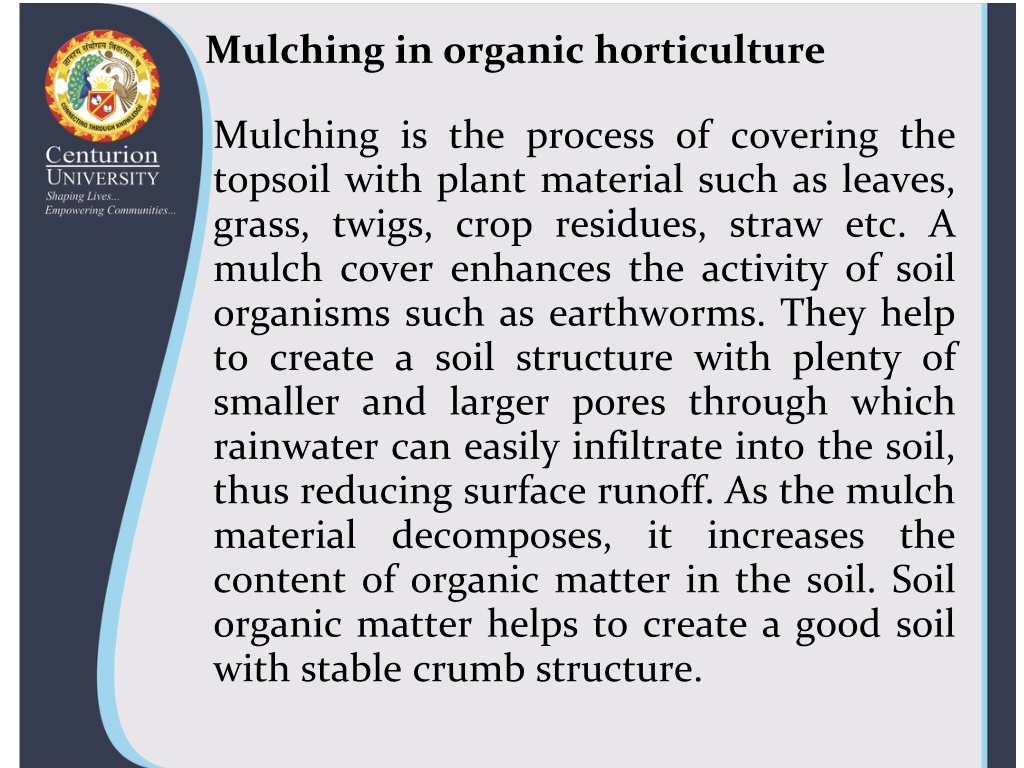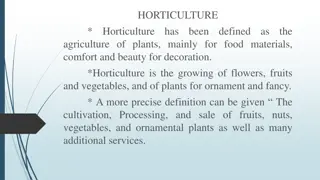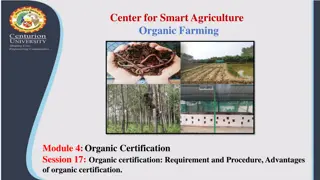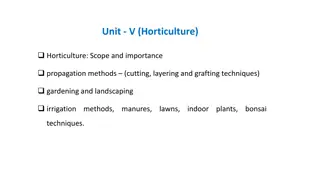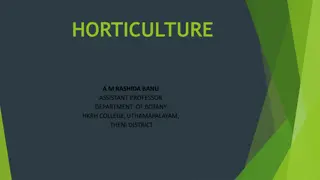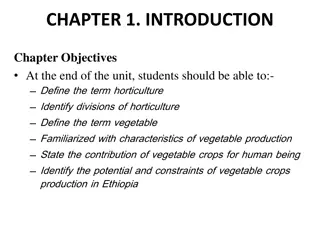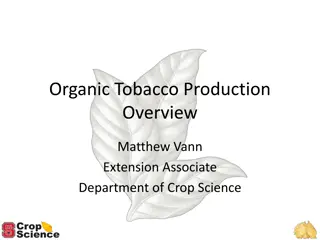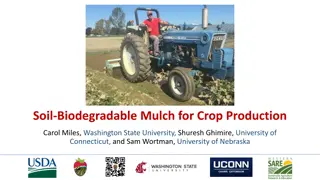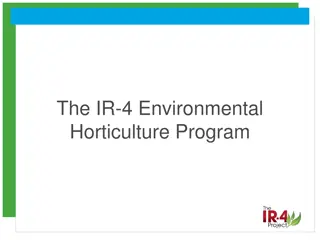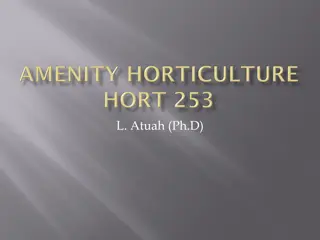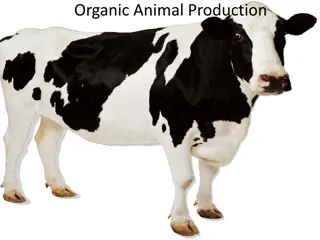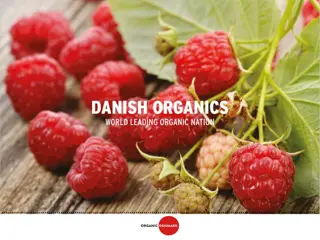Understanding the Benefits of Mulching in Organic Horticulture
Mulching in organic horticulture involves covering the topsoil with plant materials to improve soil structure, water infiltration, moisture retention, and nutrient availability. It also helps suppress weed growth, regulate soil temperature, and support soil organisms. However, careful selection of mulching materials is crucial to its effectiveness, and monitoring for potential pest and disease issues is recommended.
Download Presentation

Please find below an Image/Link to download the presentation.
The content on the website is provided AS IS for your information and personal use only. It may not be sold, licensed, or shared on other websites without obtaining consent from the author. Download presentation by click this link. If you encounter any issues during the download, it is possible that the publisher has removed the file from their server.
E N D
Presentation Transcript
Mulching in organic horticulture Mulching is the process of covering the topsoil with plant material such as leaves, grass, twigs, crop residues, straw etc. A mulch cover enhances the activity of soil organisms such as earthworms. They help to create a soil structure with plenty of smaller and larger pores through which rainwater can easily infiltrate into the soil, thus reducing surface runoff. As the mulch material decomposes, it increases the content of organic matter in the soil. Soil organic matter helps to create a good soil with stable crumb structure.
Purpose : Improving the infiltration of rain and irrigation water by maintaining a good soil structure: no crust is formed, the pores are kept open. Keeping the soil moist by reducing evaporation: plants need less irrigation or can use the available rain more efficiently in dry areas or seasons. Feeding and protecting soil organisms: organic mulch material is an excellent food for soil organisms and provides suitable conditions for their growth.
Suppressing sufficient mulch layer, weeds will find it difficult to grow through it. weed growth: with a Preventing the soil from heating up too much: mulch provides shade to the soil and the retained moisture keeps it cool. Providing nutrients to the crops: while decomposing, organic continuously releases its nutrients, thus fertilizing the soil. mulch material Increasing the content of soil organic matter: part of the mulch material will be trans-formed to humus.
Selection of mulching material The kind of material used for mulching will greatly influence its effect. Material which easily decomposes will protect the soil only for a rather short time but will provide nutrients to the crops while decomposing. If the decomposition of the mulch material should be accelerated, organic manures such as animal dung may be spread on top of the mulch, thus increasing the nitrogen content.
Sources of mulching materials: Weeds or cover crops Crop residues Grass Pruning material from trees Cuttings from hedges Wastes from agricultural processing or from forestry
Recommendations while using mulches Some organisms can proliferate too much in the moist and protected conditions of the mulch layer. Slugs and snails can multiply very quickly under a mulch layer. Ants or termites which may cause damage to the crops also may find ideal conditions for living. When crop residues mulching, in some cases there is an increased risk of sustaining pests and diseases. Damaging organisms such as stem borers may survive in the stalks of crops like cotton, corn or sugar cane. Crop rotation is very important to overcome these risks. are used for
When carbon rich materials such as straw or stalks are used for mulching, nitrogen from the soil may microorganisms for material. Thus, temporary not available for plant growth. The major constraint usually is the availability of organic material. Its production or collection usually involves labour and may compete with the production of crops. be used by the be decomposing nitrogen may for mulching
Application of mulching materials: If possible, the mulch should be applied before or at the onset of the rainy season, as then the soil is most vulnerable. If the layer of mulch is not too thick, seeds or seedlings can be directly sown or planted in between material. On vegetable plots it is best to apply mulch only after the young plants have become somewhat hardier, as they may be harmed by the products of decomposition from fresh mulch material. the mulching
